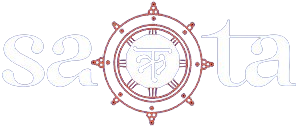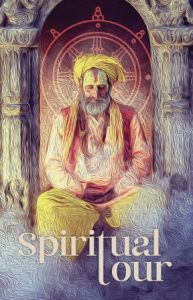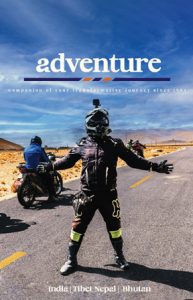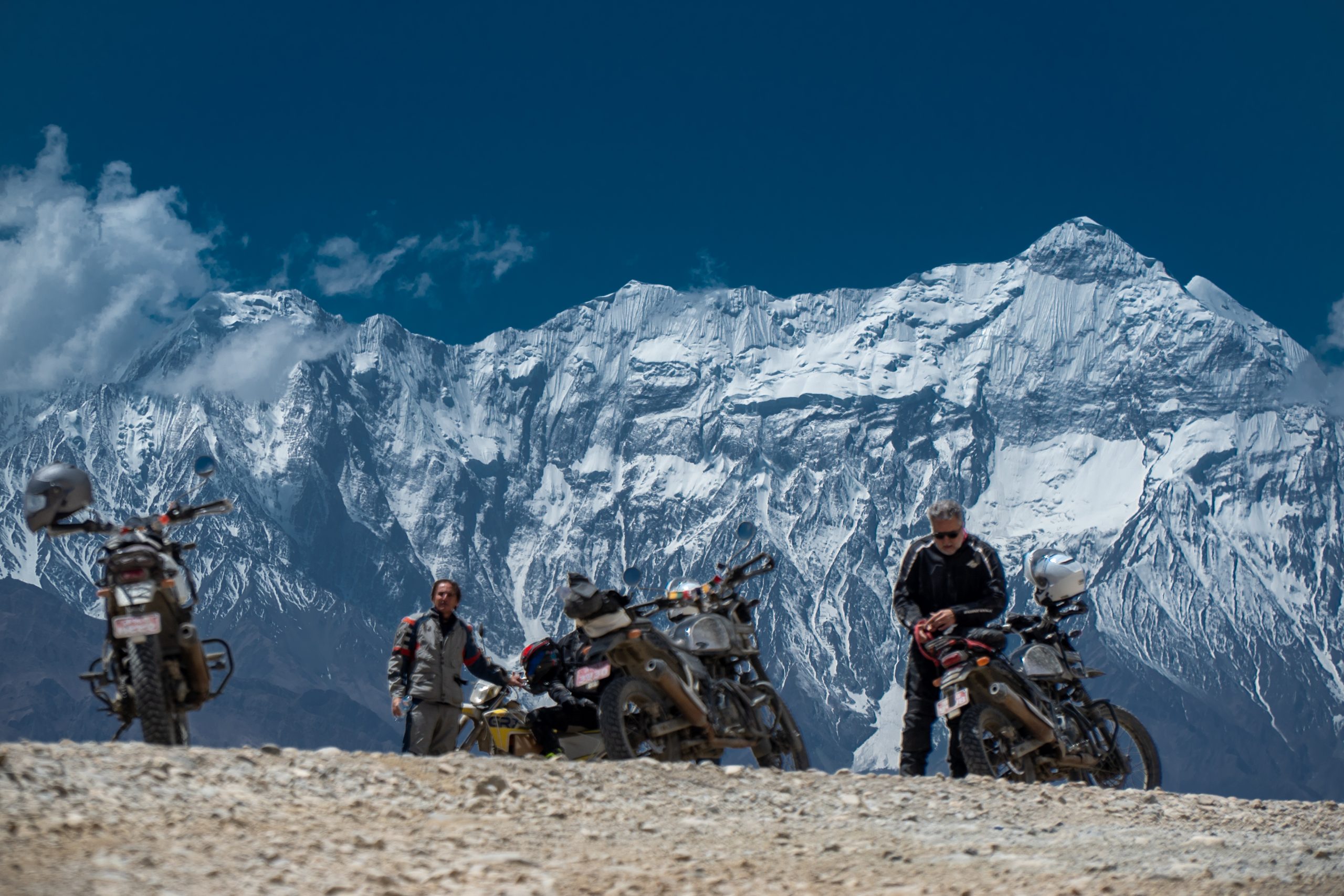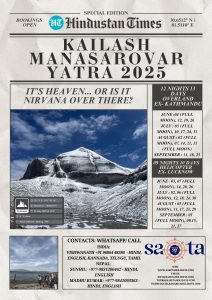Festivals of Nepal
Festivals of Nepal may sound like a broad term — and rightly so. With over 125 distinct ethnic groups, Nepal celebrates an incredible diversity of festivals, each rooted in unique cultures, languages, and traditions. For travelers seeking meaningful cultural immersion and a chance to connect with locals in the most authentic way, one of the best approaches is to follow the rhythms of the lunar calendar — particularly the full moon (Purnima) and new moon (Amavasya)days. Many of Nepal’s most vibrant and spiritually significant festivals align with these lunar phases, offering immersive experiences steeped in tradition, music, rituals, and community spirit.
1. Baishakh Purnima (April–May)
The first full moon of the Nepali lunar calendar marks Baishakh Purnima, celebrated as Buddha Purnima or Buddha Jayanti, honoring the birth, enlightenment, and nirvana (parinirvana) of Lord Siddhartha Gautama – the Buddha. This sacred day is observed across Nepal by people of many faiths, especially Newar Buddhists in the Kathmandu Valley and Himalayan Buddhists in the mountainous regions. Globally, Buddhists commemorate this day with reverence, reflection, and rituals. Key pilgrimage sites in Nepal such as Lumbini (the Buddha’s birthplace), Swayambhunath, and Bouddhanath become centers of worship, prayer, and cultural gatherings.
- Main Festival: Buddha Purnima (Buddha Jayanti)
- Significance: Commemorates the birth, enlightenment, and parinirvana of Lord Buddha
- Major Celebrations: Lumbini, Swayambhunath, Bouddhanath, and Buddhist monasteries across Nepal
Just After the New Moon: Rato Machhindranath Jaatra
About four days after the new moon of this month, the Rato Machhindranath Jaatra, one of Nepal’s oldest and longest chariot festivals, begins in Lalitpur (Patan). Lasting about a month, this vibrant and deeply symbolic event is dedicated to the deity Rato Machhindranath, revered as the god of rain and harvest. The festival includes the construction and ceremonial pulling of an immense wooden chariot through the streets of Lalitpur, with communities coming together in celebration, devotion, and hope for a prosperous monsoon. It’s a spectacular opportunity for travelers to witness Newar culture and communal tradition in its purest form.
2. Jestha Purnima (May–June)
Jestha Purnima falls on the full moon day of the second lunar month and is celebrated in various ways across Nepal, often reflecting regional and cultural diversity.
- Also Known As:
- Vat Purnima (in parts of South Asia) – where married women fast and pray for their husband’s health and longevity.
- Bhatri-Dwitiya context – in reference to brother-sister rituals in some traditions.
- Jhya Pu Nih – among the Newars of the Kathmandu Valley, it marks another important Purnima in their lunar calendar cycle.
- Significance:
Married women observe fasting, prayer, and ritual worship of the banyan tree, symbolizing strength, protection, and longevity in marriage. Sacred threads (Janai or doro) are tied around the tree and worn as blessings. - Customs:
- Worshipping of banyan trees (Vat Vriksha)
- Tying sacred threads (Janai)
- Fasting and ceremonial offerings by women for marital blessings
Just After the New Moon: Tiji Festival & Gosaikunda Snan
New Moon of Jestha brings unique Himalayan traditions to life:
- Tiji Festival in Mustang:
Celebrated over three days starting the day after the new moon, the Tiji Festival is a dramatic and sacred Tibetan Buddhist event observed in Lo-Manthang, the walled city of Upper Mustang.- Tiji (short for “Tenpa Chirim”) commemorates the triumph of good over evil and features monastic mask dances, rituals, and the dramatic re-enactment of mythological stories.
- Deeply rooted in the Bon and Tibetan Buddhist traditions, it is one of Nepal’s most visually spectacular and spiritually meaningful festivals.
- Gosaikunda Snan (Holy Bath at Gosaikunda Lake):
Just after the new moon, pilgrims begin their journey to the sacred Gosaikunda Lake, located in the Langtang Himalayan Range at an altitude of 4,380 meters. The lake is believed to have been created by Lord Shiva, and bathing here is considered highly purifying.- The holy bath (Snan) begins the day after the new moon, attracting thousands of Hindu devotees seeking blessings and spiritual cleansing.
3. Ashadh Purnima (June–July)
Ashadh Purnima, the full moon day of the Ashadh month, carries deep spiritual and cultural importance in both Hindu and Buddhist traditions.
- Also Known As:
- Guru Purnima – A day to honor and express gratitude to one’s teachers andspiritual mentors.
- Ved Vyasa Jayanti – Celebrates the birth of Sage Vyasa, who compiled the Vedas and authored the Mahabharata.
- Significance:
Disciples and students pay respect to gurus, offer gifts, ritual pujas, and seek blessings. It’s a day of reflection, humility, and devotion to those who impart wisdom. - In Buddhism:
Marks the beginning of Vassa, the traditional monastic retreat during the rainy season, when monks stay in one place to meditate and teach.
New Moon of Ashadh: No Major Festival
The new moon during Ashadh doesn’t typically mark a major religious festival. However, this month is deeply connected to agriculture and community life.
Ashadh 15 – Ropain Festival (Rice Planting Day)
Though not tied to the lunar cycle, the 15th day of Ashadh (typically late June) is widely celebrated as Ropain Diwas or Dhan Diwas – Nepal’s joyous National Paddy Planting Day.
- What Happens:
Farmers plant rice seedlings in muddy fields, accompanied by folk songs, dancing, and laughter. It symbolizes Nepal’s agrarian rhythm and reverence for nature’s abundance. - Tradition & Food:
- Eating beaten rice (chiura) with curd (dahi) is customary — believed to cool the body and celebrate the new agricultural cycle.
- Locals and visitors alike get muddy, dance in the fields, and join hands in planting, creating a rare immersive cultural experience.
- For Travellers:
This is one of the best participatory experiences for travelers in Nepal. Various communities (especially around Kathmandu Valley, Kavre, Bhaktapur, and rural Terai regions) welcome visitors to take part in Ropain celebrations, with special events, local meals, and community farming fun.
4. Shrawan Purnima (July–August) (the whole Month is holy and womens take fast on mondays and wear green, yellow and red; also paint the henna Mehendi on their hand
- Also Known As:
- Raksha Bandhan
- Janai Purnima (Sacred Thread Changing Day)
- Gaijatra (see separate description below)
- Significance:
- Hindu men change their Janai (sacred thread).
- Sisters tie Rakhi to their brothers for protection and blessings (Raksha Bandhan).
- Pilgrims visit Gosainkunda Lake, located in the Langtang Himalayan Range, to perform holy bathing rituals in honor of Lord Shiva.
Other Important Days in Shrawan:
- 1st of Shrawan (Mid-July)–Luto Fālne Din(लुतो फाल्ने दिन):
A culturally significant day in Hindu and Newar tradition, marking the end of the mourning period after the death of a close family member.- Luto means ritual impurity, and falne means to discard.
- On this day, mourners symbolically remove ritual impurity and return to normal life socially and spiritually.
New Moon (Amavasya) of Shrawan:
- Gathā Muga Chāhē (गथा मुग चाहे):
- Celebrated on Shrawan Krishna Chaturdashi (14th day of the dark fortnight).
- A Newar festival marking the end of the inauspicious half of the lunar year and the start of the festive season.
- Traditionally involves the expulsion of evil spirits with effigies, processions, and rituals in the Kathmandu Valley.
Next Day After New Moon:
- Start of Gunlā Parva (गुँला पर्व):
- The sacred month of Gunlā begins, important for Mahayana and Vajrayana Buddhists.
- Monks and lay practitioners observe retreats, meditation, and pilgrimage to shrines like Swayambhunath and other sites across the Valley.
Krishna Janmashtami:
- Celebrated on the Ashtami (8th day) of the dark fortnight in the month of Bhadra(usually August or early September).
- Marks the birth of Lord Krishna, an avatar of Vishnu.
- Best experienced at Krishna Mandir, Patan Durbar Square, where thousands gather for midnight rituals, hymns, and celebrations.
5. Bhadra Purnima (August–September)
- Also Known As: Kojagrat Purnima; Beginning of Indra Jatra; Start of Sorha Shraddha
- Significance: Bhadra Purnima marks the transition from the monsoon season to the festive autumn period in Nepal. It signals the starting of festivals like Dashain and Tihar festival.
- Customs: On this full moon night, devotees worship Goddess Lakshmi, the goddess of wealth and prosperity. It is believed that she descends to Earth and blesses those who remain awake throughout the night in prayer and devotion. Homes are cleaned and illuminated, and special pujas are conducted to invite prosperity into the household.
No Moon Day (Bhadra Aunshi): Father’s Day / Kushe Aunsi
- Also Known As: Kāśā Aunsi, Kusha Aunsi, aather’s Day (Nepal)
- Timing: Celebrated on the new moon day of the Nepali month of Bhadra (August–September)
- Significance: This day is dedicated to honoring fathers, both living and deceased. It embodies the values of filial piety, remembrance, and ancestral respect.
- Customs:
- For living fathers: Children offer sweets, clothes, and other gifts as a symbol of gratitude and reverence.
- For deceased fathers: Individuals perform Shraddha (ancestral rites) and offer tarpan (libation rituals) at sacred sites like Gokarneshwar Temple in Kathmandu.
- Kusha Grass Ritual: This day also includes the ritual collection of Kusha grass, considered holy in Hinduism and used in various ceremonies throughout the year.
- Place to Visit: Gokarna Mahadev Temple in Kathmandu – often compared to the sacred Gokarna temple in Karnataka, India, for its spiritual importance.
Teej Festival
- Overview: Teej is one of the most vibrant and widely celebrated festivals by Nepali women. Dedicated to marital bliss, longevity of husbands, and spiritual purification, it is observed with intense devotion, fasting, dancing, and singing.
- Significance:
- For married women, Teej is a prayer for the well-being and long life of their husbands.
- For unmarried women, it is observed in hopes of finding a loving and ideal life partner.
- It also serves as a time for self-purification, both physically and spiritually.
- Customs:
- Women dress in red saris and jewelry, gather in temples, especiallyPashupatinath, to worship Lord Shiva and Goddess Parvati.
- Many undertake a 24-hour fast without food or water, showcasing incredible devotion.
- Traditional songs and dances celebrating womanhood, love, and the strength of relationships are performed in groups.
- Spiritual Essence: The festival is not only about prayer but also about female solidarity,cultural expression, and hope for happiness and fulfillment in this and future lives.
6. Ashwin Purnima (September–October)
- Also Known As: Sharad Purnima
- Significance: Celebrated as the day when the moon shines brightest in the year, marking the end of monsoon and beginning of the main harvest season.
- Mythological Note: It is believed that on this night, Lord Krishna performed the Maha Raas (divine dance) with the Gopis under the full moon in Vrindavan.
- Customs: People leave kheer (sweet rice pudding) under moonlight believing it absorbs lunar nectar and becomes more auspicious.
No/New Moon of Ashwin
- Occasion: Beginning of Dashain, the most important and longest festival in Nepal.
- Key Dates (Lunar Calendar):
- Ghatasthapana 1st Day): Installation of the sacred Kalash and worship of Goddess Durga.
- Phoolpati (7th Day): Arrival of sacred flowers and leaves from Gorkha to Kathmandu.
- Maha Ashtami (8th Day): Fierce form of Goddess Durga is worshipped.
- Maha Navami (9th Day): Important day of rituals and animal sacrifices in temples like Taleju.
- Vijaya Dashami (10th Day): Elders offer Tika and Jamara (blessings) to younger members with blessings of power, prosperity, and victory.
- Traveler’s Note:
- Best Time to Witness Nepali Culture in Full Glory
- Villages come alive with gatherings, fairs, traditional swings (ping), and rituals.
- Ideal to stay in a homestay or join a local celebration in Kathmandu Valley, Gorkha, or the hills of western Nepal.
- No trekking or official business happens during this period.
7. Kartik Purnima (October–November)
- Also known as: Tripurari Purnima / Mani Rimdu Festival
- Significance: This full moon marks the destruction of the demon Tripurasura by Lord Shiva, symbolizing the triumph of good over evil. It is regarded as a highly auspicious time for spiritual practices, especially among Hindus and Buddhists.
- Also marks: The end of the Tihar (Deepawali) season and the Chhath festival.
Mani Rimdu Festival (Tibetan Buddhist Tradition)
- Timing: Celebrated in autumn, typically in October or November, based on the Tibetan lunar calendar. It begins on the first day of the tenth Tibetan month.
- Public Celebrations: Held during the last three days of the festival, featuring masked dances, sacred chants, and symbolic rituals.
- Location: Most famously observed at Tengboche Monastery in the Khumbu (Everest) region of Nepal.
- 2025 Date: In 2025, public celebrations of Mani Rimdu at Tengboche Monastery are expected to occur around mid-November. The exact dates will be announced by the monastery closer to the time.
No Moon / New Moon (Amavasya):
- Marks the beginning of the Tihar / Deepawali Festival, which lasts for five days, celebrated with lights, music, and cultural rituals across Nepal.
8. Mangsir Purnima (November–December)
- Also known as: Margashirsha Purnima / Yomari Purnima
- Significance:
- Celebrated after the harvest season, this full moon marks a time of gratitude and abundance.
- Yomari Punhi is especially important among the Newar community, who prepare Yomari, a special sweet steamed dumpling made of rice flour filled with molasses and sesame seeds.
- Also observed with:
- Rural fairs, communal feasts, and gatherings across various parts of Nepal, especially in the Kathmandu Valley.
No Moon / New Moon (Amavasya) & Vivah Panchami
- On the 5th day after the new moon, Vivah Panchami is celebrated — the divine marriage of Lord Ram and Mata Sita.
- The festival is grandly observed in Janakpur, Nepal, where a ceremonial wedding procession (Barat) arrives from Ayodhya, India, to the Janaki Temple.
- The celebration is rich with rituals, music, theatrical enactments, and cross-border pilgrimage, making it one of the most vibrant festivals in southern Nepal.
9. Poush Purnima (December–January)
- Also known as: Paush Purnima / Start of Shree Swasthani Brata Katha
- Significance:
- Marks the beginning of the month-long Swasthani Brata festival, a sacred observance for Hindu devotees, especially women.
- Pilgrims visit Salinadi River (in Sankhu, near Kathmandu) to take holy dips and begin the month of fasting, storytelling, and prayer.
- Also signals the onset of the Magh Mela (Fair) season in various parts of Nepal.
- Customs and Practices:
- Ritual bathing in rivers early in the morning.
- Charity, fasting, and listening to or reading the Swasthani Brata Katha daily for a month.
- Devotees pray for family well-being, longevity, and marital harmony.
No Moon / New Moon (Amavasya)
- Tola Lhosar — the New Year of the Tamang community, one of the largest indigenous groups in Nepal.
- Celebrated with traditional songs, dances, feasts, and community gatherings.
10 Days After Tola Lhosar
- Tamu Lhosar — the New Year of the Gurung community (not Kirant; the Kirant communities celebrate Yele or Sakela Lhosar).
- Celebrated with cultural pageantry, colorful attire, and traditional feasts.
- Major celebrations are held in Kathmandu, Pokhara, and Gurung-majority villages.
10. Magh Purnima (January–February)
- Significance:
- Marks the conclusion of the month-long Magh Snan—a sacred bathing ritual observed during the entire month of Magh.
- Devotees perform ritual baths in holy rivers and offer prayers for their ancestors’ peace.
- Major gatherings take place at Devghat, Ridi, and other sacred confluences of rivers.
1st of Magh (Mid-January)
- Festival: Maghe Sankranti
- Symbolizes the end of the winter solstice and the beginning of longer, warmer days.
- Devotees take holy dips at river confluences (especially Devghat, Ridi, and Bagmati), and worship the Sun God, seeking good health and prosperity.
- The day is celebrated with a nutritious traditional feast, believed to strengthen immunity during winter.
Traditional Foods Include:
- Til ko laddu (sesame seed balls)
- Chaku (hardened molasses)
- Ghee (clarified butter)
- Yam and sweet potatoes
No Moon / New Moon (Amavasya)
- Sonam Lhosar — New Year of the Tamang community
- Celebrated with traditional music, dance, prayers, and family gatherings.
- Symbolizes renewal, purification, and cultural pride among Tamangs.
11. Falgun Purnima (February–March)
- Also Known As: Holi Purnima
- Significance:
- Celebrates Holi, the vibrant Festival of Colors.
- Symbolizes the victory of good over evil, based on the mythological story of Prahlad and Holika.
- Customs:
- Holika Dahan (bonfire ritual) on the eve of Holi, symbolizing the burning away of evil.
- The next day, people play with colors, water balloons, and sing and dance in celebration.
No Moon / New Moon (Amavasya):
- Occurs two days before Falgun Purnima
- Festival: Maha Shivratri
- Celebrated as the birthday of Lord Shiva.
- Millions of devotees gather at Pashupatinath Temple in Kathmandu, making it one of the largest religious gatherings in Nepal.
- People observe fasts, night vigils, and perform ritual worship of Lord Shiva.
- The temple area hosts over 2 to 3 million visitors, including sadhu babas, devotees, and pilgrims from across South Asia.
12. Chaitra Purnima (March–April)
- Also known as: Chaitra Purnima
- Notable celebrations in Kathmandu:
- Paanchare Jatra– a traditional chariot procession
- Ghode Jatra– the famous Horse Festival in Tundikhel
Gahana Pokhari Jaatra- Chariot Festival insearch of Lost Gem in the Pond of Haadigaun, Kathmandu
- Significance:
Chaitra Purnima is associated with the worship of Lord Hanuman and, in some traditions, marks the beginning of preparations for the Nepali New Year. - Customs:
Fairs, religious rituals, and pilgrimages to sacred sites are common during this time. - New Moon (Amavasya):
Known for the Tel Punya or Oil Massage Festival, where oil massages are given as a ritual for health and spiritual purification. - 8th Day after the New Moon:
Marks the beginning of the Seto Machhindranath Jatra, a revered chariot festival in Kathmandu. It also aligns with celebrations of Dashain Tika in some local traditions. - 9th Day after the New Moon:
Celebrates the birth of Lord Rama. Many devotees visit the Janaki Temple in Janakpur on this sacred day.
| Festivals | When does it fall? |
| Dashain (All Nepal) 15 Days (10 Auspicious Days of Worship) | October |
| Deepawali/ Tihar (5 Days) | October/ November |
| Indra Jatra (Kathmandu) 8 Days Chariot Festival | August or September |
| Bisket Jatra (Bhaktapur) & Days Chariot Festival | April |
| Rato Machhindranath Jatra (Lalitpur) 1 month Chariot Festival | September |
| Seto Machhindranath Jaatra (3 Days Chariot Festival in Kathmandu) | April-May |
| Gai Jatra Festival (Kathmandu Valley) | August |
| Gahana Pokhari Jatra 9kathmandu) | March or April |
| Sithi Nakha (Newari Communities all over Nepal) | May – June |
| Gatha Muga (Newari Communities all over Nepal) | July |
| Mha Puja and New Year (Newari Communities all over Nepal) | October or November Celebrated During the Festival of Deepawali |
| Yomari Punhi ((Newari Communities all over Nepal) | November or December |
Tiji Festival:
The Tiji Festival is a vibrant and ancient three-day Tibetan Buddhist celebration held annually in Lo Manthang, the walled capital of Upper Mustang, Nepal. Rooted in the legend of Dorje Jono, a deity who defeated a demon bringing drought and destruction, the festival symbolizes the triumph of good over evil and the restoration of harmony. Traditionally celebrated in May, Tiji features sacred mask dances (Cham), elaborate rituals, and colorful processions performed by monks from the Choede Monastery. Locals dressed in traditional attire gather to observe the dances and offer prayers for peace and prosperity. Tiji, short for “Tenpa Chirim” meaning “Prayer for World Peace,” is not only a deeply spiritual event but also a major cultural highlight of the Mustang region, attracting both pilgrims and travelers seeking an authentic Himalayan experience.
Mani Rimdu Festival
Mani Rimdu Festival is one of the most important religious festivals of the Sherpa community in the Everest region, celebrated with grandeur at Tengboche Monastery, as well as in Thame and Chiwong monasteries. Rooted in Tibetan Buddhism, this 19-day long festival usually culminates in a 3-day public celebration during October or November, coinciding with the tenth lunar month of the Tibetan calendar. The festival commemorates the establishment of Buddhism by Guru Rinpoche (Padmasambhava) in Tibet and the victory of Buddhism over Bon, the indigenous religion. The highlight of Mani Rimdu is the masked dance performances by monks in elaborate costumes, enacting tales of good versus evil and symbolizing the triumph of compassion and wisdom. Devotees and trekkers gather in large numbers to witness the vibrant rituals, spiritual ceremonies, sand mandala construction, blessing rituals, and cultural dances that showcase the essence of Himalayan Buddhist traditions. The Mani Rimdu Festival is not only a sacred spiritual event but also a vital cultural celebration that strengthens community ties and keeps ancient traditions alive in the highlands of Nepal.
Teej Festival:
The Teej Festival is a vibrant and deeply spiritual Hindu celebration observed primarily by women in Nepal and some parts of India, dedicated to Goddess Parvati and her union with Lord Shiva. Celebrated in the Nepali month of Bhadra(August–September), Teej spans three days and is marked by ritual fasting, prayer, and joyous dancing. Married women fast for the long life and well-being of their husbands, while unmarried girls pray for a good life partner. The festival begins with Dar Khane Din, a feast day before the fast, followed by a rigorous 24-hour fast without food or water, and ends with Rishi Panchami, a purification day involving holy baths and worship of the Sapta Rishi (seven sages). Teej is not only a religious observance but also a cultural celebration of womanhood, sisterhood, devotion, and tradition, turning temples like Pashupatinath in Kathmandu into vibrant centers of red-clad women singing devotional songs and performing traditional dances.
Shorha Shraddha, also known as Pitri Paksha or Mahalaya, is a 16-day ritual period in the Nepali lunar calendar(typically falling in the month of Bhadra–Ashwin, around September–October) dedicated to paying homage to one’s ancestors or Pitris. During this period, families perform Shraddha rituals, offering tarpan (holy water), pinda daan (rice balls), sesame seeds, flowers, and food to honor the departed souls and seek their blessings. It is believed that during Shorha Shraddha, the souls of the ancestors visit the earth, and by performing these rites, the living fulfill their spiritual duties (dharma) toward their lineage. The rituals are often carried out at sacred sites such as Gokarna in Kathmandu, Balmiki Ashram, or near riverbanks of pashupatinath aaryaghat or most of the riverbanks of Nepal; also inside the home of the people. Shorha Shraddha holds deep cultural and spiritual importance in Nepalese Hindu society, emphasizing the bond between the living and the deceased, and the continuity of familial respect across generations.
Dashain:
Dashain is the longest and most significant festival in Nepal, celebrated by Hindus across the country with great enthusiasm. Spanning 15 days, it typically falls in September or October and honors the victory of the goddess Durga over the demon Mahishasura, symbolizing the triumph of good over evil. The festival begins with Ghatasthapana, the sowing of sacred barley seeds, and includes rituals such as animal sacrifices, temple visits, family gatherings, and blessings from elders. Central days like Phulpati, Maha Ashtami, and Vijaya Dashami are marked with vibrant traditions, where elders apply tika (a mixture of yogurt, rice, and vermilion) and jamara (barley grass) to younger family members. Dashain also signifies renewal and unity, with people buying new clothes, cleaning homes, and traveling long distances to be with family. It is a time of joy, devotion, and cultural richness that deeply reflects Nepali heritage.
Deepawali/ Tihar
Deepawali, also known as Tihar in Nepal, is a vibrant and culturally rich festival celebrated over five main days, but its essence often extends to ten days with associated rituals and preparations. The festival begins with Kag Tihar (worship of crows), followed by Kukur Tihar (honoring dogs), Gai Tihar and Laxmi Puja (worship of cows and the goddess of wealth), Govardhan Puja and Mha Puja (worship of nature, oxen, and self-purification), and culminates in Bhai Tika, a heartfelt celebration of the bond between brothers and sisters. Surrounding days include ancestral offerings, purification rituals, worship of tools and trades, and lively cultural traditions like Deusi and Bhailo—folk singing and dancing performed by youths. Homes are beautifully decorated with oil lamps, candles, and colorful rangolis, symbolizing the victory of light over darkness, prosperity, and unity within families and communities.
Gai Jatra, or the “Cow Festival,” is a unique and vibrant Newari celebration observed annually in the Kathmandu Valley, primarily in Kathmandu, Bhaktapur, Lalitpur, and Kirtipur. The festival traces its origins to the Malla era, when a grieving queen was consoled by a procession of people who had also lost loved ones, initiated by the king to show her that mourning was a shared human experience. Since then, Gai Jatra has been celebrated each year during the month ofBhadra (August–September) as a tribute to the deceased. Families of the departed join colorful street processions, carrying portraits and incense, while children dressed as cows or deities lead the way. Observers offer fruits, nuts, and sweets to participants. The celebration is especially lively in Bhaktapur, where traditional dances like Ghintang Ghisi Twak accompany bamboo chariots (Taha Macha) adorned with the deceased’s belongings. In Kirtipur, the festival also marks the success of local harvests and community achievements. In recent years, Gai Jatra has embraced greater inclusivity, with the LGBTQI+ community participating in cross-dressing parades that celebrate diversity, identity, and freedom of expression, turning the festival into a profound mix of mourning, satire, culture, and celebration of life.
Gahana Pokhari Jatra is a unique Newari festival celebrated in Hadigaun, Kathmandu, symbolizing the search for lost jewelry. According to legend, Tudaldevi and her sisters—Mahalaxmi, Manamaiju, and Nuwakotdevi—were once bathing in the sacred Gahana Pokhari. During their swim, Tudaldevi lost her jewels. As night approached, Manamaiju and Nuwakotdevi left for home, but Tudaldevi remained with Mahalaxmi, whose home was nearby, to search for the ornaments. When the jewels were eventually found, both returned home. This story gave rise to the tradition of the Gahana Pokhari Jatra, which is observed annually between Chaitra Shukla Ashtami and Baisakh Navami (March–April). The festival begins with the placement of the idol of Tudaldevi Vaishnavi on a chariot in Baluwatar, which is then taken in a grand procession to Hadigaun. Simultaneously, another chariot carrying Mahalaxmi, the youngest sister, arrives from Naxal. In Hadigaun, the chariot of Tudaldevi is ritually pulled three times around the Gahana Pokhari, reenacting the search for the lost jewels. Devotees pay homage by offering gifts, including umbrellas, while the air resonates with the rhythmic beating of Dhimeand Nyakhin drums, adding energy and devotion to this deeply rooted cultural celebration.
Sithi Nakha
Sithi Nakha is one of the major Newari festivals of the Newar community. This day is devoted to the eldest son of Mahadev and Parvati, Kumar. The festival that falls in the month of Jestha marks the beginning of monsoon. The locals clean the water sources like wells, spouts, tube wells near their locality to celebrate. Also, the Newars gorge on delicious pancakes called Chatamari and Bara made from ground pulse-batter.
Gathaamuga
Gathaamuga, also known as Ghantakarna Chaturdashi is a regional Newari festival of Kathmandu valley which has many myths linked to it. The most popular one being from Bhaktapur that Gatha muga was a man who believed in the power of gods and sought out for people in need even if he had to go to an extent of killing the wrong.
But, when he died no one was willing to cremate him as he was not associated with any religion. On this day, an elaborate replica of Gathamuga is made from straws, bells and masks and is burnt as a sign of cremation in the legend. People also wear a wrought iron ring as a protection against evil spirits.
Mha Puja and New Year
Mha Puja which means “worship of self” is a yearly Newari ritual that also heralds the start of a Newari year (the Nepal Sambat). It arrives on the 4th day of Tihar. Newars organize a Mandap-Puja as a symbol of celebrating the spirit within oneself. In Basantapur Durbar Square, there are rallies and parades of Newari musicians called “Bhintuna” to mark the new year.
Yomari Punhi
The Yomari Punhi is a harvest festival of Newars which falls in November/December. Yomari meaning “tasty bread” has become the favourite of everyone these days. It is a delicacy made out of rice flour dough, filled with sesame seeds and molasses or Khoa, and steamed. Yomari is offered to the goddess Annapurna and enjoyed by Newars with a big feast on this full moon day.
Finally, these are some of the major Newari festivals celebrated in Kathmandu valley. Travellers can enjoy their Nepal travel on the several occasions of these Newari festivals. In addition, these festivals lighten your trip with a unique experience of festivals of the Newari community from Kathmandu valley.
Festivals that travellers should not miss if only to choose 4:
1. Indra Jatra,
Indra jaatra is one of the most vibrant and significant festivals of Kathmandu, is celebrated each year in the Nepali month of Bhadra (August–September) and lasts for eight days. The festival is rooted in the legend of Lord Indra, the god of rain, who descended to Earth in search of the Parijat flower for his mother, Dagini. Disguised as a human, he was captured and imprisoned for theft. After seven days, his mother came to rescue him, and once their divine identities were revealed, they promised the people a prosperous winter harvest and safe passage of the deceased to heaven. To honor this blessing, Indra Jatra is celebrated annually. The heart of the celebration is Basantapur Durbar Square in Kathmandu, beginning at Kumari Chhen, the residence of the Living Goddess. The festival kicks off with the erection of a 36-foot ceremonial pole (Linga) and the revealing of Aakash Bhairav, whose gigantic mask gushes jaad (local liquor). A highlight is the majestic chariot procession of the Living Goddess Kumari, along with the chariots of Ganesh and Bhairav, accompanied by masked dancers, musicians playing traditional Newa instruments, and characters like Majipa Lakhey, Pulu Kishi (the white elephant representing Indra’s mount), and Sawan Bhaku. On different days, the chariot procession takes unique routes across Kathmandu’s historical neighborhoods. Cultural dances such as Mahakali and Devi Nach, lamp-lighting ceremonies for deceased ancestors, and a dramatic midnight Dashavatar performance(depicting the ten incarnations of Vishnu) in front of Gaddi Baithak add to the grandeur. Indra Jatra is not just a festival—it is a living expression of Kathmandu’s rich cultural heritage and communal spirit.
2.Bisket Jatra
Bisket Jatra, also known as Biska Jatra, is one of the most electrifying and culturally rich festivals of the Newar community, celebrated each year in mid-April, marking the Nepali New Year in Bhaktapur, Thimi, and Bode of the Kathmandu Valley. The festival’s origins trace back to a legend of a cursed princess whose husbands died on the night of their wedding. One brave young man, guided by the goddess Bhadrakali in disguise, stayed awake on his wedding night and witnessed two serpents slithering from the princess’s nose. Acting swiftly, he killed them, breaking the curse and becoming a hero. This tale so captivated King Jagjyoti Malla that he institutionalized it through the celebration of Bisket Jatra. The highlight of the festival in Bhaktapur is a dramatic tug-of-war involving a massive wooden chariot of Bhairab, pulled fiercely by the eastern and western halves of the city toward Khalna Tole. A towering 25-meter Yoh Si Dyo (lingam) is erected and ceremoniously pulled down the next day, marking the arrival of the new year. In Thimi, the celebration takes on a vibrant twist with the Sindur Jatra—a color-filled event where participants from different localities carry their deities in palanquins while joyfully smearing orange vermilion powder and playing Dhimay drumsin Layeku Thimi. Meanwhile, in Bode, the Jatra features a striking tongue-piercing ceremony, where a local volunteer walks through the town with an iron spike pierced through his tongue, bearing fiery torches on his shoulders. Bisket Jatra is more than a festival—it’s a dynamic display of tradition, bravery, devotion, and celebration that breathes life into the streets of Bhaktapur each spring.
3. Rato Machhindranath Jatra
Rato Machhindranath Jatra is Nepal’s longest and most spectacular chariot festival, held in Lalitpur (Patan) to honor Rato Machhindranath, the red manifestation of Avalokiteshvara, the Buddhist deity of compassion and rain. Celebrated for over 1,600 years, the festival was originally established by King Narendra Dev to commemorate the arrival of the deity from Assam and the miraculous end of a catastrophic drought—believed to be the result of a curse by Guru Gorakhnath, who had been slighted by the people of Lalitpur. Peace was restored when his teacher, Rato Machhindranath, arrived, compelling Gorakhnath to lift the curse and allow rain to return.
The highlight of the month-long festival is the towering 60-foot chariot, crafted entirely of bamboo and wood, which carries the image of Rato Machhindranath through the ancient city streets—from Ganabahal to Sundhara, Lagankhel, and finally Jawalakhel. Accompanied by Chakuwa Dyah, a smaller chariot representing a Bodhisattva, the procession pulses with the rhythms of Dhime drums and clashing brass cymbals. In Thali, local women pull the chariot in a rare moment of matriarchal participation, while in Lagankhel, a coconut is thrown from the chariot’s summit, symbolizing blessings and good fortune.
The festival culminates in Jawalakhel, where a jewel-encrusted “Bhoto” (vest) is dramatically displayed by a government official in the presence of the Kumari of Patan and the head of state. According to legend, the vest was once gifted by the serpent god Karkotak Nag to a farmer but was lost and later contested during the Jatra. Until proof of ownership is produced, the vest remains in the care of Machhindranath. A glimpse of this sacred Bhoto is believed to bring luck and protection to those who witness it. The festival typically takes place in May or June, beginning on the 4th day of the bright fortnight of Bachhala, according to the lunar calendar.
4. Seto Macchindranath is another major festivals in Nepal that is celebrated in the month of Chaitra (March). This chariot procession festival is three days long and is pulled from different places of Kathmandu. A group of soldiers discharges their rifles into the air every day when the chariot arrives at its destination. In Jana Bahal, there is a temple dedicated to Seto Machindranath (also known as Machhindra Bahal). The temple, which is located between Ason and Indra Chok in central Kathmandu, is thought to have been built about the 10th century.
Every year, during the Jana Baha Dyah Jatra celebration, the deity’s picture is placed in a chariot and carried around Kathmandu. Every year, the deity is bathed and repainted in a ritual that represents the changes that occur in one’s life.
Our Latest Posts
View All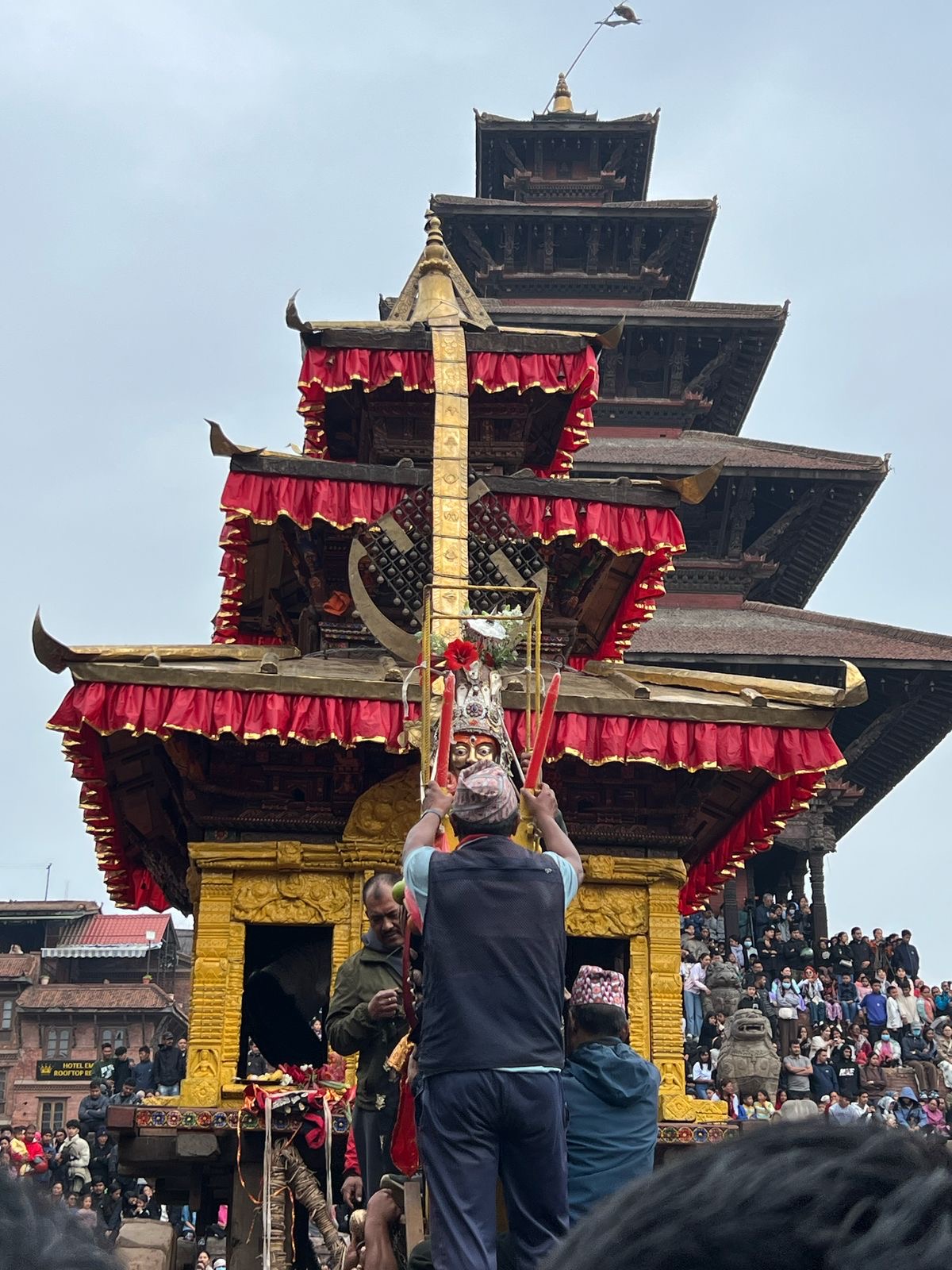
Festivals of Nepal
Festivals of Nepal may sound like a broad term — and rightly so. With over 125 distinct ethnic groups, Nepal celebrates an incredible diversity of […]
Read More